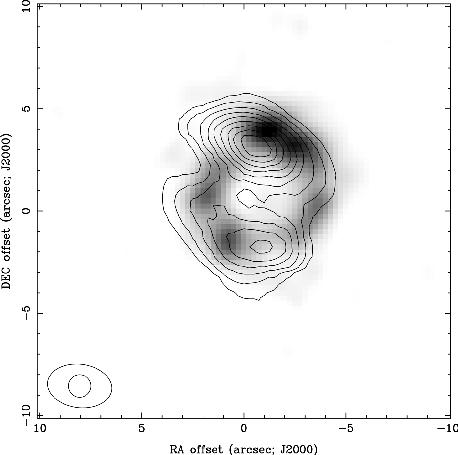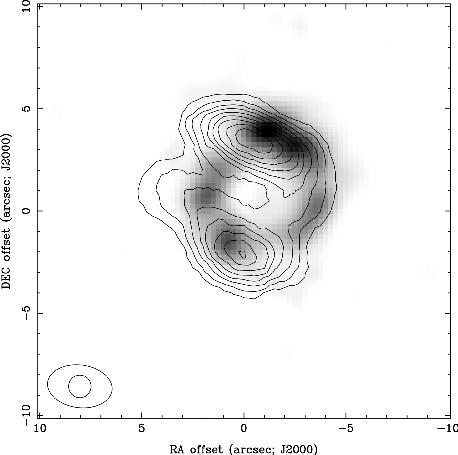Compact Array images dense gas in a circumnuclear ring
Starbursts are regions of enhanced star formation efficiency, where gas is being converted into stars at much higher rates than can be sustained over billions of years. Aside from merging and dwarf galaxies, one of the most common sites for starbursts is the central kiloparsec of barred spiral galaxies. Such starbursts appear as bright circumnuclear rings in emission tracers of ionised gas such as hydrogen recombination lines or radio continuum. A nice example in the southern sky is the nearby galaxy NGC 7552, which was imaged with the Compact Array at 3 cm by Forbes et al. (1994, AJ 107, 984).
On 9 May we re-observed this galaxy with the Compact Array in the 3-mm lines of HCN and HCO+. These lines trace the densest molecular gas and thus provide information on where star formation is still in progress. Observations were conducted on a clear, cool day in the H168 configuration and went smoothly. The two lines were observed simultaneously, allowing a direct comparison of their line strengths. Both lines were detected with a signal-to-noise ratio of ~ 6. The images, which show both the rotation velocity of the ring and the distribution of dense gas along it, are among the best produced thus far by the Compact Array at 3 mm.
Although analysis is still in progress and follow-up observations expected later this winter, a few results are already apparent. First, the HCN and HCO+ peaks do not exactly coincide, even though the two molecules have similar critical densities for excitation. This may be attributable to the dependence of HCO+ on photochemistry. Second, both molecular tracers display a double or "twin peaks" morphology, which is commonly seen in barred galaxies and has been attributed to crowding of gas orbits as they shift from being oriented parallel to perpendicular to the bar. Third, there doesn't seem to be much gas interior to the ring, consistent with the relative lack of star formation there. This indicates that the inflow of gas along the bar which feeds the ring does not continue on to the nucleus, presumably due to orbital dynamics associated with the inner Lindblad resonance of the bar. Previous studies by Kohno and collaborators suggest that both the weakness of HCN in the nucleus and the low HCN/HCO+ ratio of about one are consistent with the lack of Seyfert activity in this galaxy — any central black hole is probably "starved" of fuel by the inability of gas to flow inwards.


Figure 1: Compact Array 3-cm image of Forbes et al. (1994), recently reprocessed by M. Dahlem (ATNF), overlaid with contours of integrated HCN (left) and HCO+ (right) emission. The contours are spaced by 10% of the peak intensity starting at 10%. The beam sizes are 1² at 3 cm and 2² × 3² at 3 mm.
As the accompanying figures indicate, the dense gas is distributed somewhat differently from the radio continuum emission, which is believed to be mostly non-thermal in origin (Forbes et al. 1994). Since extinction does not affect the radio image, the offset may be related to a time delay between the peaks in the dense gas, which are tied to the pattern speed of the bar, and the locations of recent star formation, which revolve at a different angular velocity. The symmetry of the 3-cm emission suggests that there may be a regular timescale on which bursts of star formation occur. A comparison with recently released Spitzer Space Telescope data is currently underway.
We thank the ATNF engineers and Narrabri staff for efforts over the summer which led to significant improvements in the 3-mm receiver temperatures and antenna gains.
Tony Wong (ATNF/UNSW), Stuart Ryder (AAO), Kotaro Kohno (U. of Tokyo) and Ron Buta (U. of Alabama).
(Tony.Wong@csiro.au)
